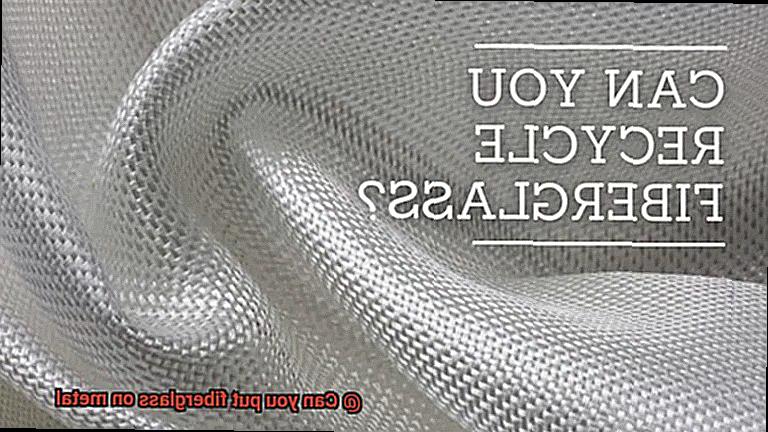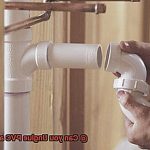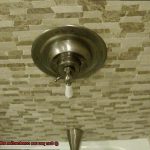Picture this: a material that’s as versatile as a chameleon, as strong as Hercules, and as light as a feather. That’s fiberglass for you – the ultimate game-changer in the world of construction and design. But here’s the million-dollar question: can you put fiberglass on metal? Buckle up, my friend, because the answer is a resounding yes.
In this blog post, we’re about to embark on an adventure into uncharted territory – the realm where fiberglass meets metal. We’ll explore the ins and outs, weigh in on the pros and cons, and equip you with some invaluable tips and tricks to ensure your success. Whether you’re a DIY daredevil or a seasoned pro looking for innovative solutions, consider this guide your trusty companion.
So grab your hard hat, flex those creative muscles, and get ready to dive headfirst into the captivating world of fusing fiberglass with metal. It’s time to unlock a whole new dimension of strength, resistance, and longevity for your structures.
Let’s jump right in and unleash the true potential of this dynamic duo.
What is Fiberglass?
Contents
- 1 What is Fiberglass?
- 2 Is it Possible to Put Fiberglass on Metal?
- 3 Preparing the Metal Surface for Application
- 4 Applying the Fiberglass
- 5 Advantages of Using Fiberglass on Metal
- 6 Disadvantages of Using Fiberglass on Metal
- 7 Special Considerations for Applying Fiberglass to Metal
- 8 Seeking Professional Assistance for Complex Projects
- 9 Conclusion
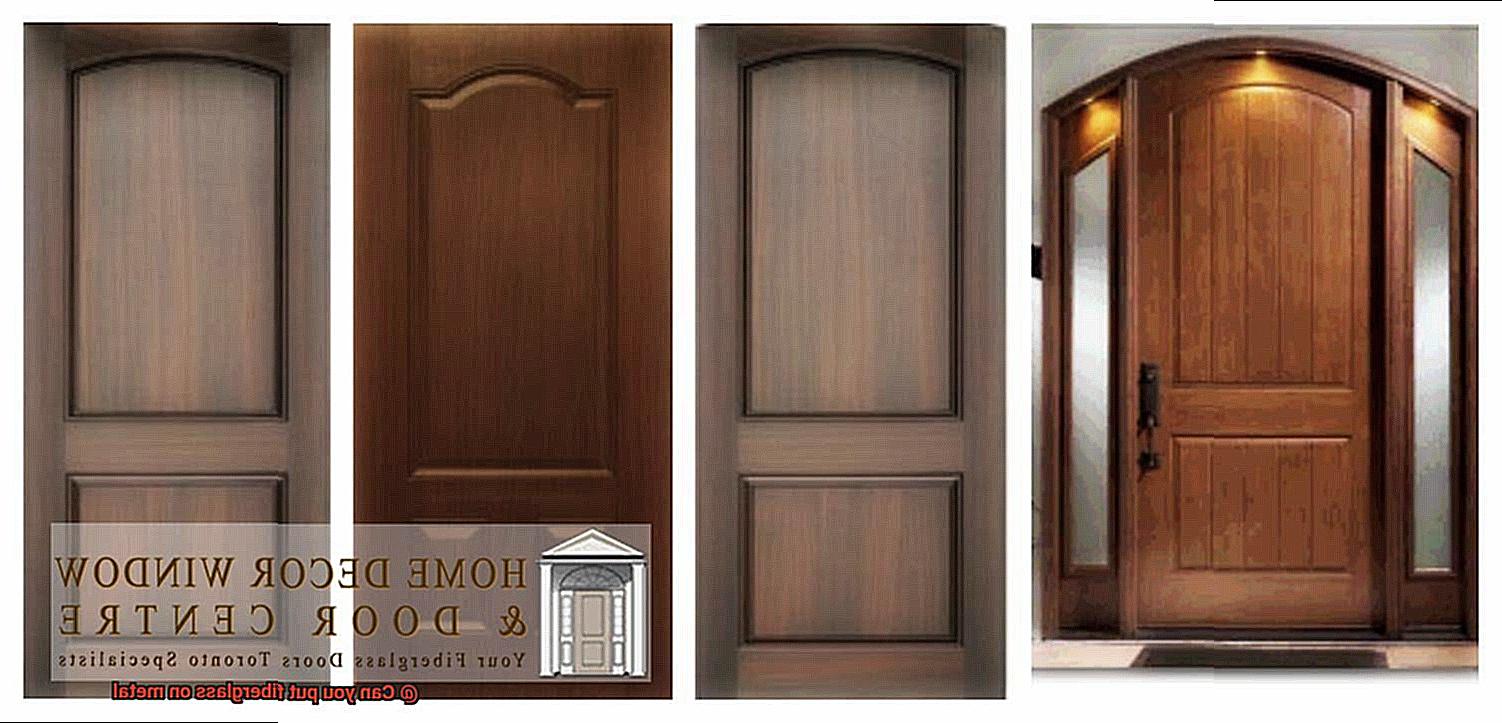
Delve into the world of fiberglass, a versatile and powerful material that has captivated industries around the globe. With its unique properties and wide range of applications, fiberglass has become a cornerstone of modern manufacturing.
At its core, fiberglass is a composite material consisting of fine glass fibers embedded in a polymer matrix. These glass fibers are created by melting silica and extruding it into thin strands, which are then carefully woven together to form a fabric-like material. This fabric serves as the foundation of fiberglass.
The polymer matrix, typically made of resin like epoxy or polyester, plays a crucial role in fiberglass. It binds the glass fibers together, providing strength and durability. The combination of these strong fibers and flexible resin creates a material that is lightweight yet incredibly robust, capable of withstanding wear and tear.
So what makes fiberglass stand out from other materials? Let’s explore its key advantages:
- Strength-to-Weight Ratio: Fiberglass boasts an impressive strength-to-weight ratio, surpassing many metals while remaining significantly lighter. This makes it an ideal choice for weight-conscious industries such as aerospace and automotive sectors.
- Corrosion Resistance: Unlike metals that rust or corrode over time, fiberglass remains unaffected by exposure to moisture, chemicals, or harsh weather conditions. Its resistance to corrosion makes it a reliable option for outdoor or marine applications.
- Thermal and Electrical Insulation: Fiberglass excels in providing excellent thermal and electrical insulation properties. It resists the conduction of heat and electricity effectively, making it perfect for insulation purposes. It is widely used in electrical enclosures and insulating materials for electronic devices.
- Versatility in Shape and Form: One of the greatest strengths of fiberglass lies in its ability to be molded into complex shapes. Whether hand lay-up or compression molding techniques are employed, this material can be easily customized to meet specific product requirements.
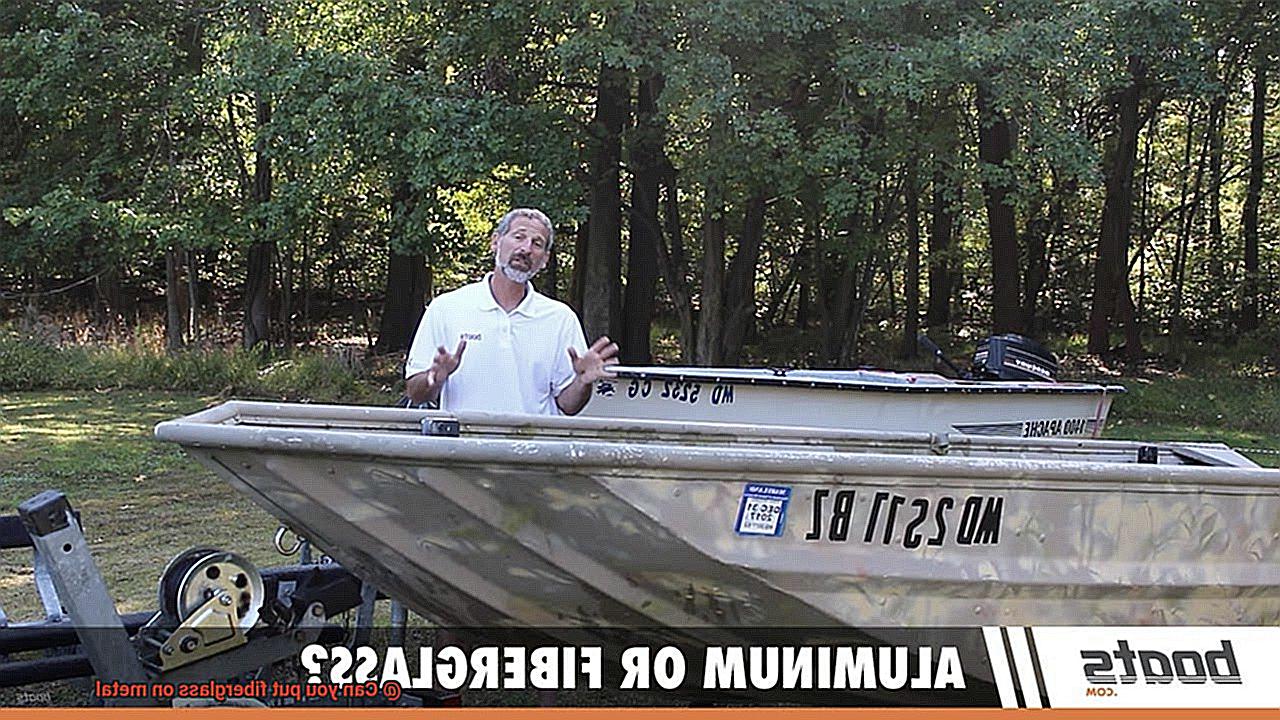
But what about using fiberglass on metal surfaces? Absolutely. Fiberglass can effectively reinforce and repair metal structures. By applying layers of fiberglass cloth or matting onto the metal surface and saturating it with epoxy or polyester resin, a robust bond is formed.
Before applying fiberglass to metal, it is crucial to ensure the surface is clean and free from rust, grease, and contaminants. Sanding or using suitable cleaning agents can achieve this. To enhance adhesion, experts recommend using a primer specifically designed for bonding fiberglass to metal surfaces.
Is it Possible to Put Fiberglass on Metal?

Fiberglass, a versatile material woven from fine glass fibers, is commonly used in industries such as automotive, aerospace, construction, and marine for insulation, reinforcement, and repairs. But can fiberglass be successfully applied to metal surfaces? Let’s dive into the process of bonding these two materials together.
To start, the metal surface must be thoroughly prepped. This involves ensuring it is clean, dry, and free from any grease, oil, or rust. A solvent or degreaser can be used to scrub away contaminants, followed by sanding to create a rough texture for better adhesion.
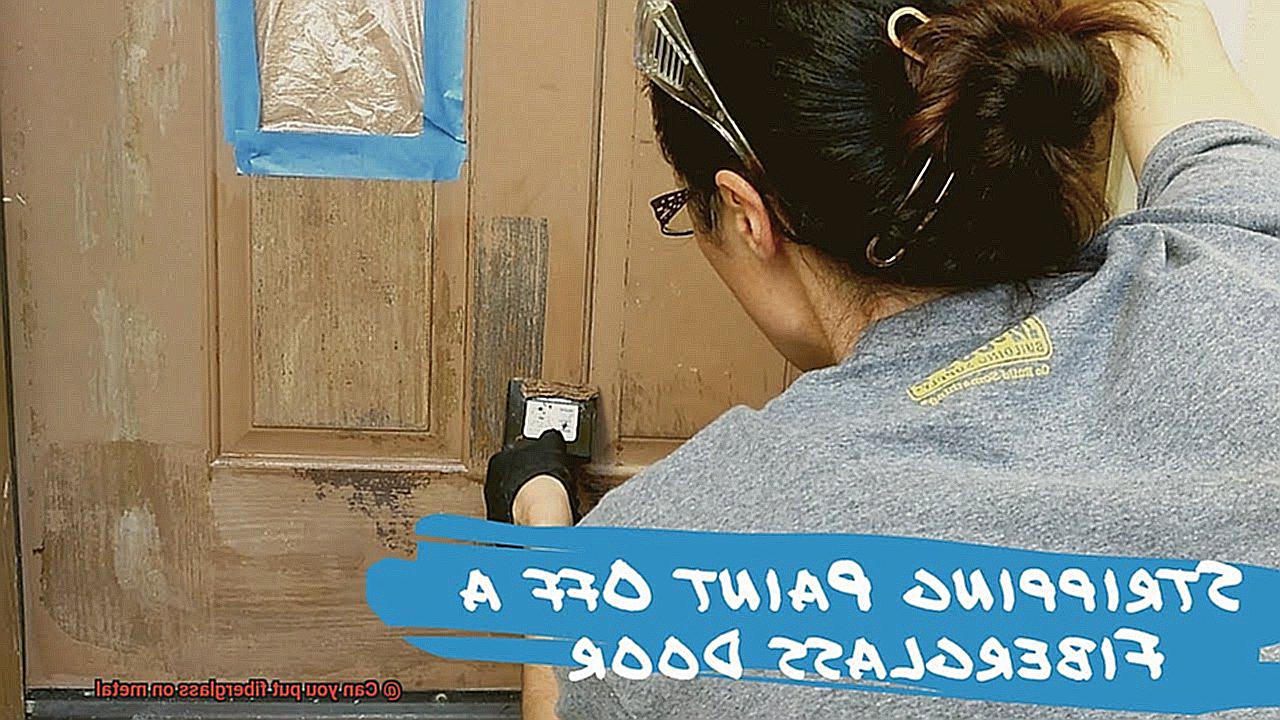
The next step is applying the adhesive or resin that will create the bond between the fiberglass and metal. Using a brush or roller, an even layer of adhesive is spread onto the metal surface. Now comes the exciting part – carefully laying the fiberglass fabric or mat over the adhesive-coated metal and pressing it down to remove air bubbles and wrinkles.
To ensure a strong bond, the fiberglass fabric or mat needs to be fully saturated with adhesive or resin. This involves brushing or rolling more adhesive onto the fabric until it becomes completely soaked. After this saturation process, it’s time to let the magic happen – curing time. The drying and hardening process can take several hours depending on the type of adhesive or resin used.
But why stop there? For those seeking extra strength and thickness, additional layers of adhesive/resin and fiberglass fabric/mat can be added. Each layer should be saturated and cured before moving on to the next.
Before embarking on this glue-filled adventure, safety precautions are crucial. Protect yourself with gloves, goggles, and a respirator to avoid potential health hazards from the chemicals involved.
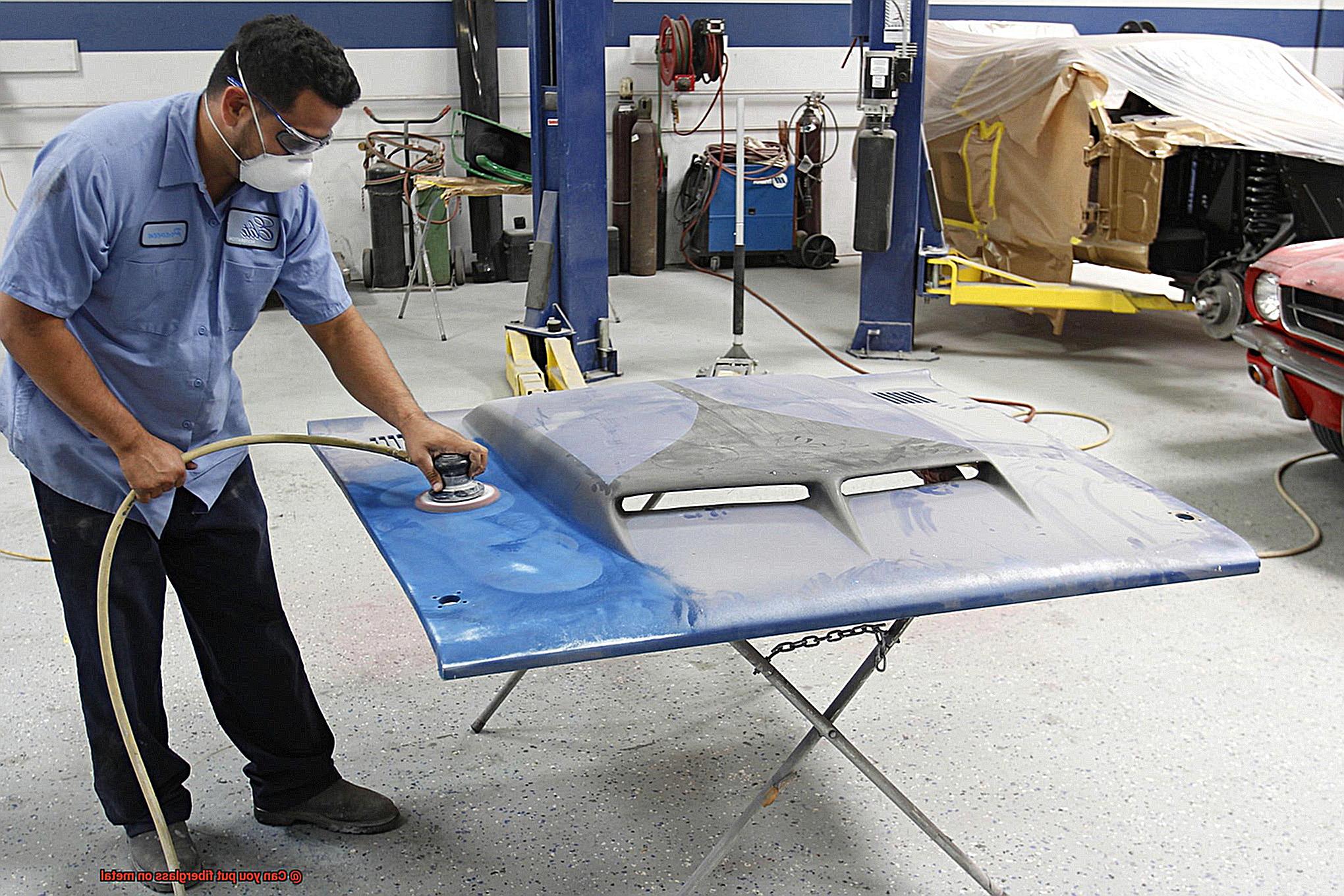
Preparing the Metal Surface for Application
Join us as we unveil the secrets to ensuring a robust and enduring bond between these two materials.
Step 1: Banishing Contaminants
To achieve a flawless bond, we must banish any dirt, grease, oil, or other contaminants from the metal surface. Arm yourself with a gentle detergent or degreaser, a scrub brush or sponge, and diligently cleanse the metal surface. Rinse away any residue thoroughly and remember to allow it to dry completely before proceeding.
Step 2: Adieu Paint and Coatings
Now it’s time to bid farewell to any lingering paint or coatings on your metal surface. Choose between the power of coarse sandpaper or the magic of a chemical paint stripper to perform this crucial task. Sanding not only eradicates the paint but also creates a rough texture that will enhance the adhesion of the fiberglass.
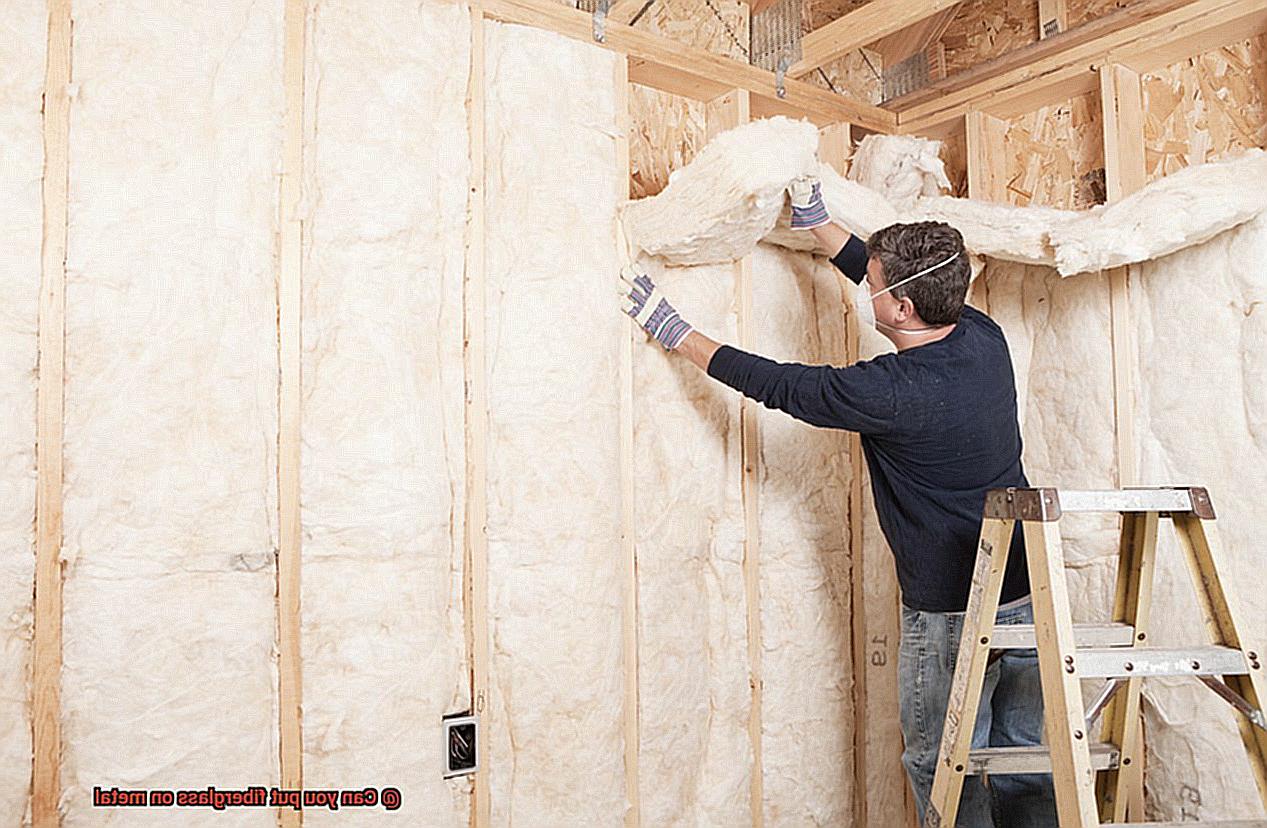
Step 3: Rust Be Gone
Embark on a quest to uncover any signs of corrosion or rust on your metal surface. Fear not if you encounter these foes. Equip yourself with a trusty wire brush or sandpaper and valiantly scrub until you expose a pristine metal surface. Once victorious, apply a specialized primer for metal surfaces to protect against future corrosion.
Step 4: Creating the Perfect Profile
Prepare to unleash your artistic skills as you create an enchanting profile on your metal surface that promotes superior adhesion. Utilize sandpaper or an abrasive pad to etch or roughen the surface, bringing forth microscopic peaks and valleys. This intricate landscape provides ample surface area for the fiberglass to form an unyielding bond.
Step 5: Wiping Away Imperfections
Before commencing the application of adhesive, embark on a final quest to wipe away any imperfections on the metal surface. Harness the power of solvents such as acetone or alcohol to banish any lingering dust or debris. This final step ensures a pristine and velvety surface, ready for optimal adhesion.
Congratulations. You have successfully prepared your metal surface for the magical process of bonding fiberglass. Now, armed with the knowledge of safety precautions, including gloves, goggles, and a respirator, you are ready to embark on this extraordinary adventure.
Applying the Fiberglass
We are about to dive into a world where metal surfaces transform into durable works of art, fortified against the ravages of time.
The adventure begins with surface preparation. Bid farewell to dirt, grease, and rust as you wield your trusty cleaner, scrubbing the metal until it shines like a beacon. A clean canvas is essential for our fiberglass masterpiece.
With the metal pristine and dry, it is time to summon the almighty primer. This mystical elixir will forge an unbreakable bond between metal and fiberglass. No nook or cranny should escape its touch; let every inch be covered in this magical potion.
Now comes the exhilarating part – the application of fiberglass. Mix your resin adhesive with a hardener, concocting a powerful potion that ensures an unyielding connection. Gently lay the fiberglass upon the metal surface, pressing it firmly to guarantee a steadfast adhesion. Should air bubbles or wrinkles dare to appear, fear not. With a roller or brush, smooth them out and banish imperfections.
Now, patience becomes our ally. Allow the adhesive to cure for hours or even an entire night. It is during this time that the magic unfolds – the sticky mess transforms into an impenetrable fortress.
Once the adhesive has fully cured, it is time to trim and sand any excess fiberglass. An even and lustrous surface awaits, ready to captivate onlookers and leave them in awe.
You have successfully applied fiberglass to metal. Take a moment to appreciate your handiwork. Your metal surfaces are now impervious to corrosion, impact, and all manner of harm.
So whether you seek to reinforce weak areas, repair damaged surfaces, create watertight barriers, or imbue structural integrity – fiberglass is your secret weapon. Remember, proper surface preparation, adhesive application, and curing time are the keys to a sturdy and reliable bond.
Advantages of Using Fiberglass on Metal
Today, we’ll explore the captivating world of fiberglass and its incredible advantages when applied to metal. Prepare to be amazed as we delve into the realm of enhanced strength, corrosion resistance, lightweight wonders, thermal insulation, design flexibility, and cost-effectiveness. So grab your cleaning tools and let’s embark on this transformative adventure.
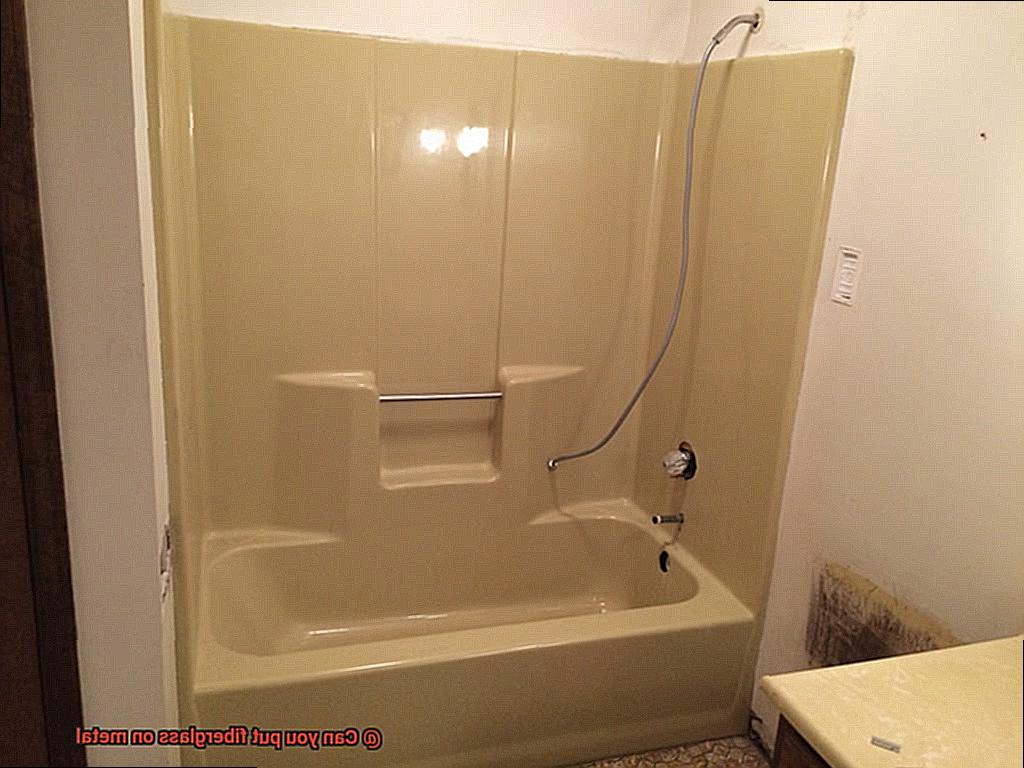
Strength and Durability:
Fiberglass is renowned for its exceptional tensile strength, making it the ultimate ally in reinforcing structural integrity. When fiberglass is applied to metal, it creates a protective shield that can withstand impacts, vibrations, and external forces with ease. Say goodbye to worries about dents and deformations – fiberglass has got you covered.
Corrosion Resistance:
By preventing moisture from reaching the metal substrate, fiberglass effectively inhibits rust formation and extends the lifespan of your precious metal component. With the power of fiberglass, you can create an impenetrable barrier between your beloved metal and those pesky corrosive elements.
Lightweight Marvels:
In industries where weight reduction is crucial, such as aerospace or automotive manufacturing, fiberglass on metal is a game-changer. Despite its impressive strength, fiberglass is remarkably lightweight compared to traditional alternatives like steel or aluminum. This combination allows for substantial weight savings without compromising structural integrity – a win-win situation.
Thermal Insulation Wizardry:
With its low thermal conductivity, fiberglass acts as a magical insulating layer that reduces heat transfer between the metal and its surroundings. Whether it’s for enclosed spaces or structures, fiberglass-on-metal applications ensure comfortable environments and energy efficiency.
Imagine stepping into a space enveloped by stable temperatures, thanks to the thermal insulation properties of fiberglass on metal.
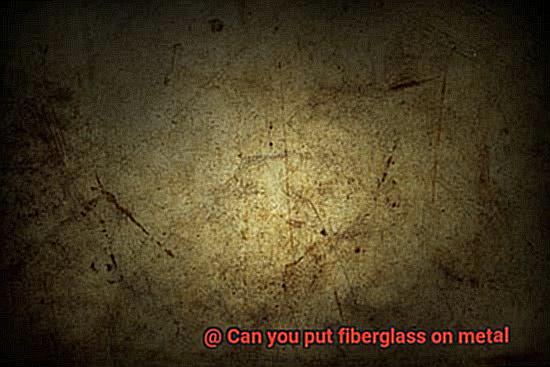
Design Flexibility:
Fiberglass materials can be molded into various shapes and sizes, offering unparalleled design flexibility when used in conjunction with metal. Unlike the constraints of welding or machining, fiberglass can be easily molded or formed to fit complex contours. This versatility opens up a world of endless possibilities for captivating and customized designs that still maintain the strength and durability of the underlying metal.
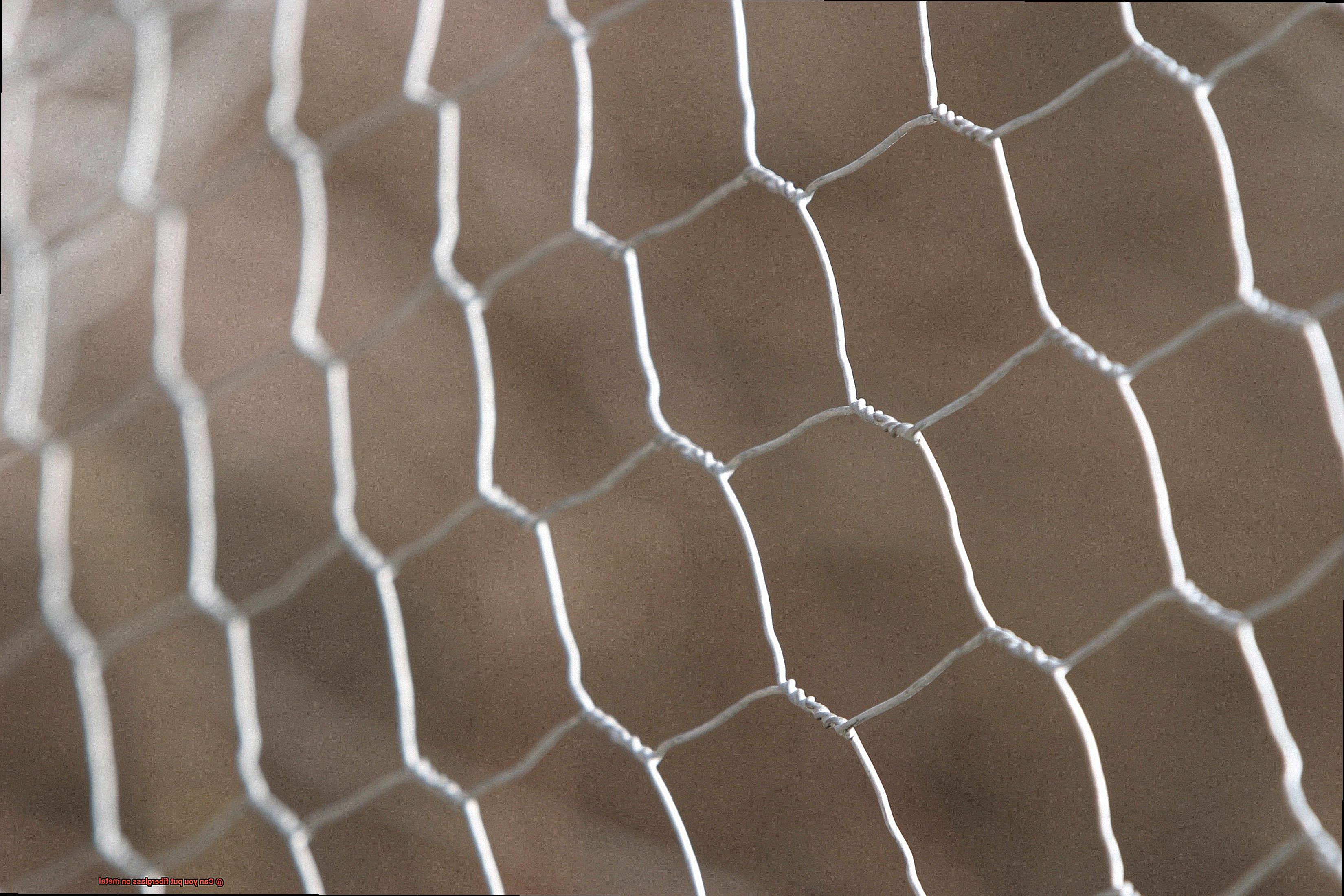
Cost-Effectiveness:
Compared to materials like carbon fiber or certain metals, fiberglass offers similar properties and benefits at a lower cost. Fiberglass-on-metal applications are a cost-effective solution that allows you to achieve desired results without breaking the bank, leaving you with more resources to allocate to other critical areas. We understand that budget constraints are a reality for many industries.
Disadvantages of Using Fiberglass on Metal
The combination of fiberglass and metal may seem like a winning formula, but it’s not without its drawbacks. While there are certainly advantages to using fiberglass on metal, it’s crucial to be aware of the potential disadvantages before embarking on your next project. Let’s delve deeper into the drawbacks of this combination.
One of the primary disadvantages is that fiberglass simply isn’t as strong as metal. Although it can provide some reinforcement, it may not offer the same level of durability and structural integrity. If you’re seeking a super sturdy solution, fiberglass might not be the best choice.
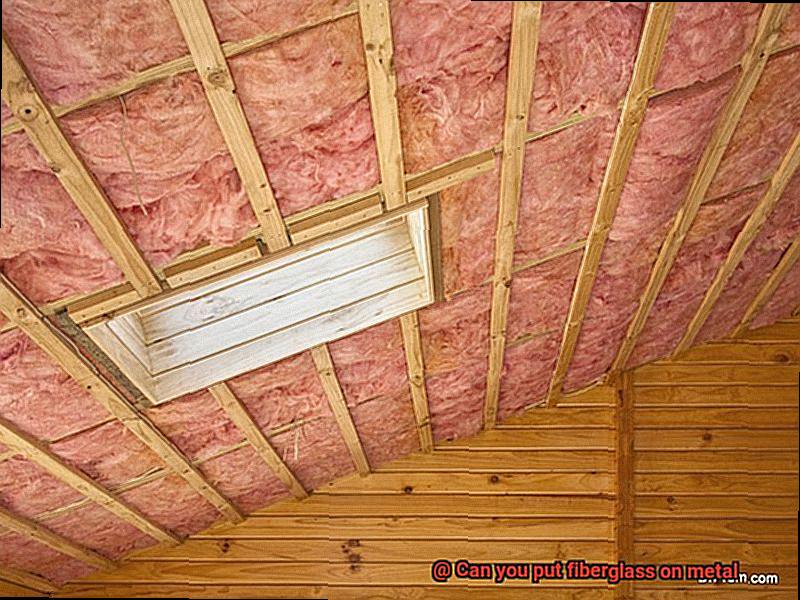
Another downside is that fiberglass is prone to cracking and chipping, particularly when exposed to impact or stress. This susceptibility can create weak spots in the coating, compromising the overall strength of the metal. Weak spots are certainly undesirable in any project.
The application process can also prove to be a headache. It demands meticulous surface preparation, including thorough cleaning and sanding, to ensure proper adhesion. This meticulousness adds to the overall cost and labor involved in the project. If you’re seeking a quick and easy solution, fiberglass might not be your best bet.
Fiberglass is also less resistant to high temperatures than metal. When subjected to heat, it can melt or deform, potentially causing damage to the underlying metal surface. If your project involves high temperatures, fiberglass might not be able to handle the heat.
Let us not forget about the detrimental effects of UV radiation on fiberglass. Over time, exposure to sunlight can lead to discoloration, fading, and loss of strength and flexibility in the coating. If your project is expected to spend an extended period in the sun, reconsidering the use of fiberglass might be wise.
Maintenance and repairs are another consideration. Fiberglass is more prone to wear and tear compared to metal, necessitating frequent patch-ups for cracks, sanding down rough areas, and reapplication of protective coatings.
In certain environments where saltwater corrosion is a concern, such as marine settings, fiberglass may not provide adequate protection against rusting. If you plan on taking your project out to sea, fiberglass might not be the best choice.
Lastly, let’s discuss weight. Incorporating fiberglass onto metal increases the overall weight of the structure. While this might not be an issue for some projects, it can prove to be a significant drawback in industries where weight reduction is crucial, such as aerospace or automotive.
Special Considerations for Applying Fiberglass to Metal
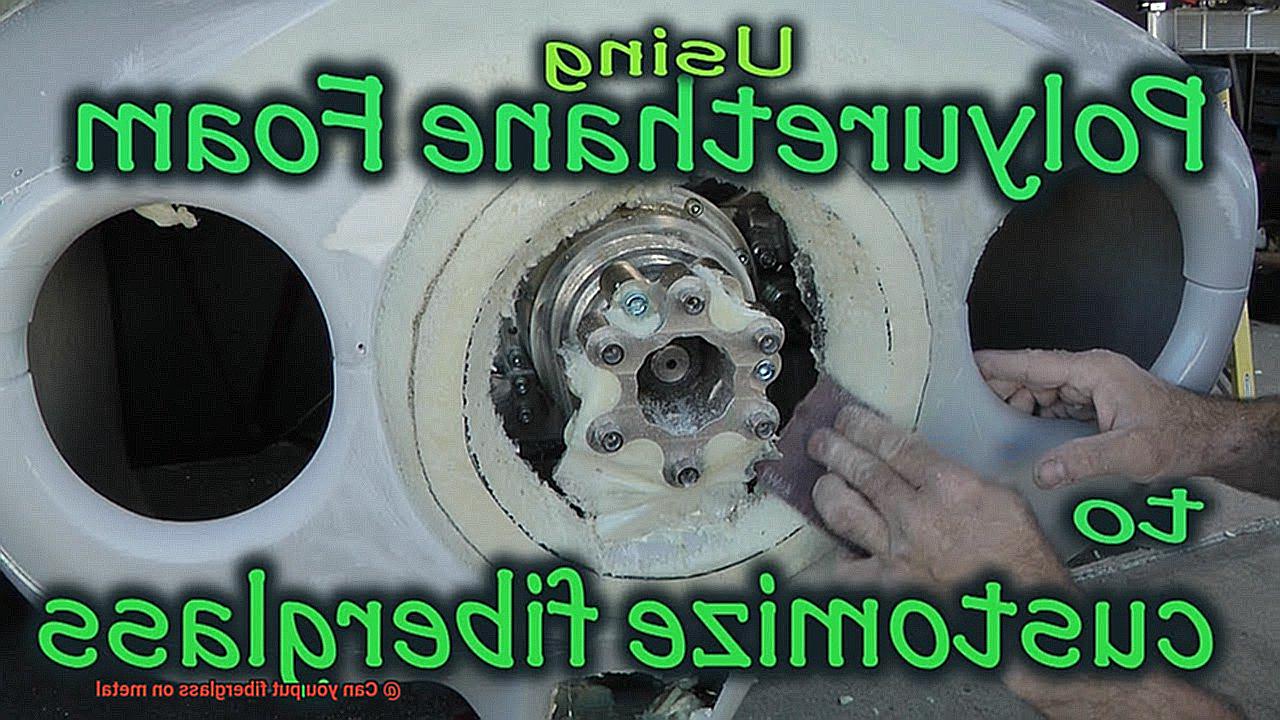
When it comes to combining fiberglass and metal, attention to detail and careful planning are essential for a successful and long-lasting bond. Whether you’re repairing a boat hull or creating a custom automotive part, understanding the special considerations for applying fiberglass to metal surfaces is crucial. In this article, we will explore the key factors that will help you achieve the strong bond you desire while addressing any potential challenges along the way.
Surface Preparation:
To create a solid foundation for a successful fiberglass application, proper surface preparation is vital. Start by thoroughly cleaning the metal surface to eliminate any dirt, grease, or rust. Using a solvent or abrasive cleaner can aid in this process. Next, sand the surface to create a rough texture that promotes better adhesion. Remember, a clean and rough surface sets the stage for a strong fiberglass bond.

Choice of Adhesive:
Selecting the right adhesive or bonding agent is crucial for a strong bond between fiberglass and metal. Look for adhesives specifically designed for bonding these two materials together. Ensure compatibility with both the fiberglass material and the type of metal being used. Manufacturers often provide recommendations for suitable adhesives, so be sure to follow their guidelines.
Application Technique:
Achieving optimal results requires applying fiberglass in multiple layers. Allow each layer to cure before applying the next one. This process ensures a strong and durable bond between the fiberglass and metal. Follow the manufacturer’s instructions regarding curing times and application techniques.
Consider Surface Compatibility:
While fiberglass can adhere well to most metal surfaces, certain finishes may pose challenges. Highly polished or smooth metal surfaces may require additional preparation, such as roughening or priming, to enhance adhesion.
Temperature and Humidity Considerations:
Temperature and humidity play a significant role in the curing process of the adhesive used for fiberglass application. Follow the manufacturer’s instructions regarding optimal temperature and humidity levels for proper bonding. Working in an environment with controlled temperature and humidity levels will contribute to the success of your fiberglass application.
Safety Precautions:
Working with fiberglass and adhesives requires proper safety precautions. Always wear protective gloves and goggles to minimize potential health hazards. Additionally, ensure you have a well-ventilated workspace to avoid exposure to harmful fumes or dust.
Seeking Professional Assistance for Complex Projects
This article will explore the advantages of seeking professional assistance for complex projects involving fiberglass and metal. From meticulous surface preparation to tailored material recommendations and access to specialized tools, professionals bring invaluable expertise to ensure flawless results that stand the test of time.
Expert Metal Surface Preparation:
Professionals possess the knowledge and experience to meticulously prepare the metal surface before applying fiberglass. Through thorough cleaning, meticulous sanding, and precise priming, they establish an optimal foundation for adhesion, mitigating future issues and ensuring a robust bond between fiberglass and metal.
Tailored Material Recommendations:
With a myriad of fiberglass grades and adhesives available, professionals can guide you in selecting the most suitable materials for your project requirements. Their expertise enables them to assess factors such as strength, flexibility, and durability, ensuring you achieve the desired outcome with confidence.
Access to Specialized Tools and Equipment:
Professionals are equipped with specialized tools designed specifically for working with fiberglass on metal surfaces. Whether it’s a high-quality spray gun for a flawless finish or a precisely engineered roller for even application, these tools elevate the quality and longevity of your project.
Valuable Advice on Best Practices:
Experienced professionals can offer invaluable insights into techniques like layering and curing times. By following their guidance, you can avoid common pitfalls and mistakes that novices often encounter. Their expertise ensures a strong and durable bond between fiberglass and metal, guaranteeing your project’s success.
Time and Cost Savings:
By consulting professionals from the outset, you can save significant time and effort in the long run. Their expertise eliminates the need for costly rework due to improper application or inadequate preparation. Additionally, their insights can streamline your project’s timeline while delivering a superior end result, saving you both time and money.
D6jEkz3_-po” >
Conclusion
In conclusion, the answer to the question “Can you put fiberglass on metal” is a resounding yes. Fiberglass can indeed be applied to metal surfaces, providing numerous benefits and advantages. The combination of these two materials creates a strong and durable bond that can withstand various environmental conditions and stresses.
By applying fiberglass to metal, you can enhance the structural integrity and longevity of the metal object. Fiberglass acts as a protective layer, shielding the metal from corrosion, rust, and other forms of damage. This makes it an ideal solution for industries such as automotive, aerospace, construction, and marine.
The process of applying fiberglass to metal involves several steps. First, the metal surface needs to be properly cleaned and prepared to ensure optimal adhesion. Then, a layer of epoxy resin is applied to the metal surface as a bonding agent. Once the resin has cured or partially hardened, fiberglass fabric or matting is laid over it and saturated with more resin.
As the resin cures completely, it forms a strong chemical bond with both the fiberglass material and the metal surface. This creates a seamless integration between the two materials, resulting in increased strength and durability.
Furthermore, fiberglass offers versatility in terms of design options. It can be molded into different shapes and sizes to fit specific metal objects or structures. This flexibility allows for customization and innovation in various industries where aesthetics are important.
In addition to its protective properties and design possibilities, fiberglass also provides insulation benefits when applied to metals. It helps regulate temperature by reducing heat transfer or preventing condensation buildup on cold surfaces.
In summary, fiberglass can undoubtedly be put on metal surfaces with great success. Its ability to strengthen, protect, insulate, and enhance the overall performance of metals makes it an invaluable material in numerous applications.

